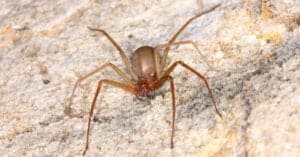Nevada might seem like the last place that spiders want to be since the state is covered in desert and mountainous regions. Yet, spiders can thrive in those areas, too. In fact, some very large and deadly spiders populate this part of the United States. While you will certainly want to avoid the black widow spider and the brown recluse spider, they aren’t among the bigger spiders in Nevada. Today, we’re going to focus on the five biggest spiders in Nevada.
We’ll show you how large they grow, what they look like, if they’re dangerous to humans, and where you’re most likely to encounter them in your daily life.
We’ve come up with a list of some of the biggest spiders in the area. Each of them should give you a good idea of how big spiders get in this dry, arid area. For the sake of variety, we focused on one member of each family. Otherwise, you would be looking at all tarantulas.
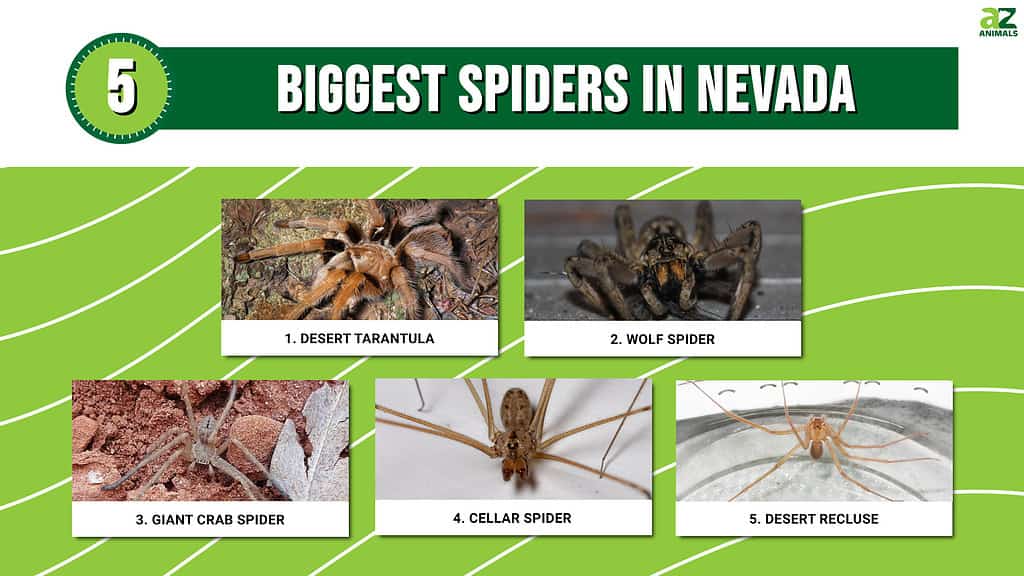
1. Desert Tarantula

The desert tarantula is the largest spider in Nevada.
©Ryan M. Bolton/Shutterstock.com
| Scientific Name | Size | Danger to Humans |
|---|---|---|
| Aphonopelma iodius | 3 to 5.1 inches | Poses little danger to humans, about as harmful as a bee sting |
The desert tarantula and its cousin, the western desert tarantula, are typically found in the Sonoran Desert in areas like Arizona and New Mexico, but they can also be found in Nevada. This particular spider is one that some people find fascinating, and others worry about meeting.
The tarantula is a large, fanged spider that hunts insects, reptiles, and even other arachnids when the situation calls for it. These spiders can vary in their color, but many of them have pale hairs on their carapace and dark brown or black hair along the rest of their body. They can also have reddish-brown hairs along their cephalothorax as well.
These spiders are not something you’ll commonly find under your kitchen sink. They prefer to be out in the wild where they can hunt or hide in their burrow. Although they look rather scary, the bite of a tarantula is not serious to most people.
In fact, it has been compared to a bee sting. Nevertheless, it’s a good idea not to harass these arachnids. You’ll rarely see them around, though. They are nocturnal creatures that avoid interactions with humans.
2. Wolf Spider
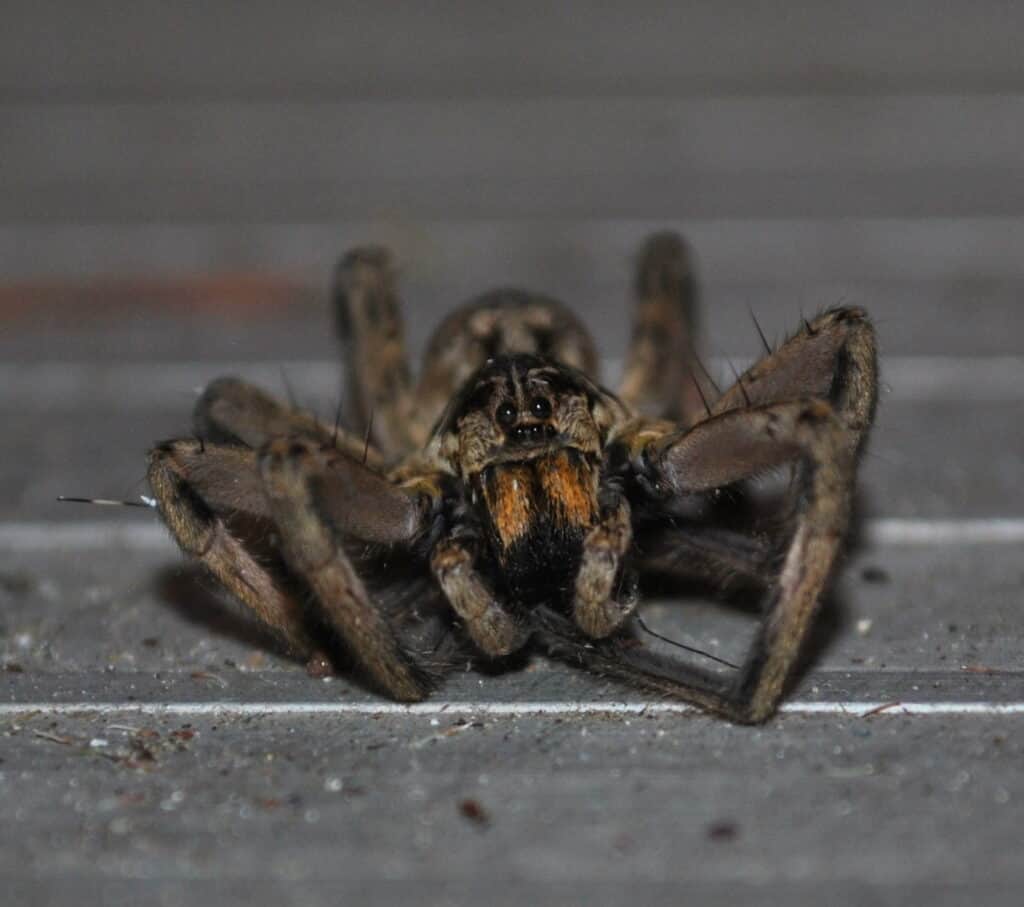
Wolf spiders can look very similar to tarantulas.
| Scientific Name | Size | Danger to Humans |
|---|---|---|
| Hogna antelucana | 2-5 inches | Delivers a painful bite that causes swelling, but allergic reactions are possible. |
Wolf spiders are large, hairy arachnids that are often mistaken for tarantulas because they’re large and hairy. However, their abdomen section is not quite as bulbous as most tarantulas, but they are larger than other members of their family.
Oftentimes, these spiders appear in the colors black, brown, tan, and gray. They often have banding colors on their lets and may have an alternating light stripe on their cephalothorax and a dark stripe on their abdomen.
These spiders are often spotted inside homes. They tend to scare people when they do go indoors. They are large and move very fast. Moreover, these spiders carry their unborn young on their backs. This makes their abdomen appear even larger than normal, making the association between them and a tarantula seem even more obvious.
Their bite is not very bad, but it can cause swelling and more if the person bitten is allergic to their venom. All in all, give these creatures a wide berth unless you’re planning to take them out.
3. Giant Crab Spider
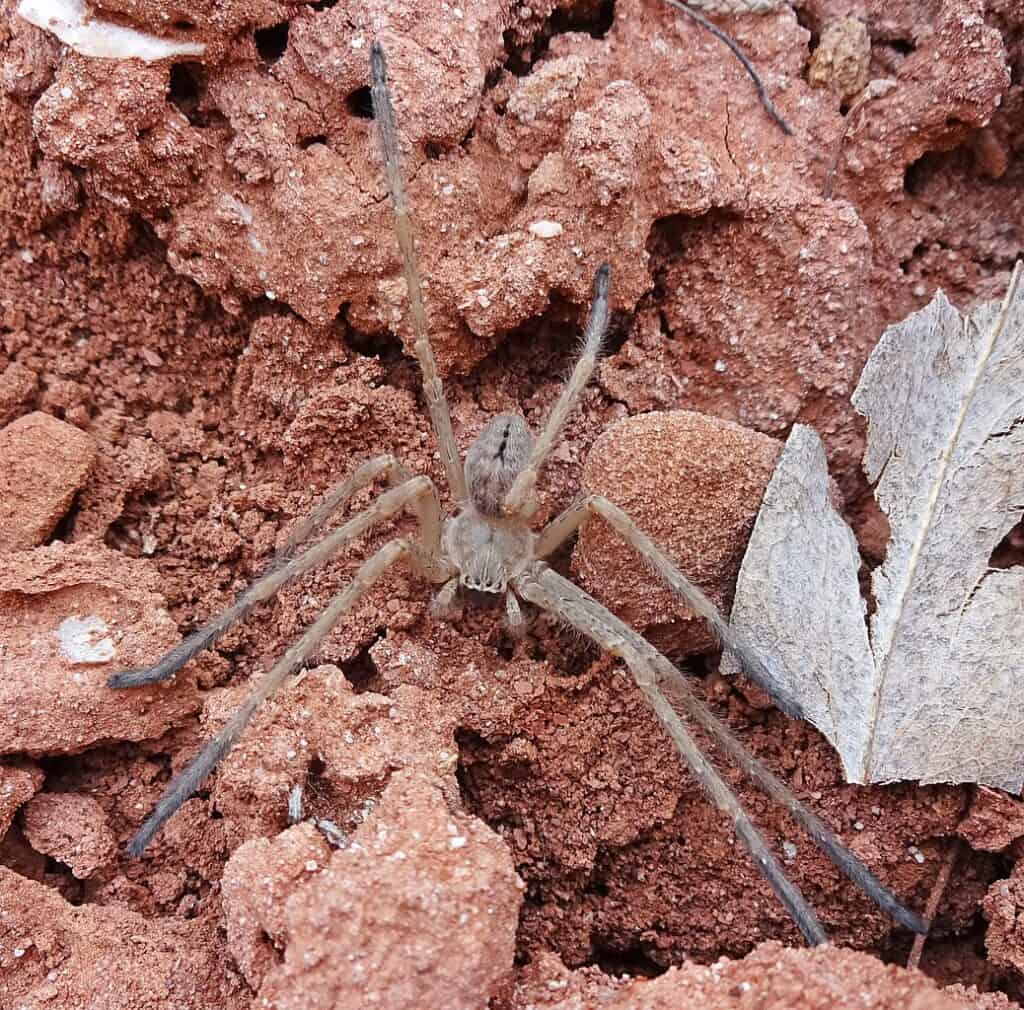
The giant crab spider has very long legs and can deliver a painful bite.
©Andrey Zharkikh from Salt Lake City, USA / CC BY 2.0, via Wikimedia Commons – Original / License
| Scientific Name | Size | Danger to Humans |
|---|---|---|
| Olios giganteus | 3-4 inches | Deliver a painful bite, but it doesn’t do lasting harm. |
The giant crab spider is one of the biggest spiders in Nevada, but it’s one of the smaller members of the huntsman spider family. This particular creature can measure up to 4 inches in total leg length, and some anecdotes suggest they can get closer to 6 inches.
That is still somewhat smaller than those found in other countries. For example, the largest huntsman spiders measured 12 inches in length. Arachnophobes in Nevada should be glad those huntsman spiders don’t live in the area.
These spiders are usually black, orange, tan, and brown, often with lighter colors on the cephalothorax and abdomen and dark colors on the bottom of their legs and around their mouths.
They have a large abdomen, and they often have a thin black line in the middle of it. They hunt at night and tend to stay on the ground, but they can wander into buildings in search of food.
4. Cellar Spider
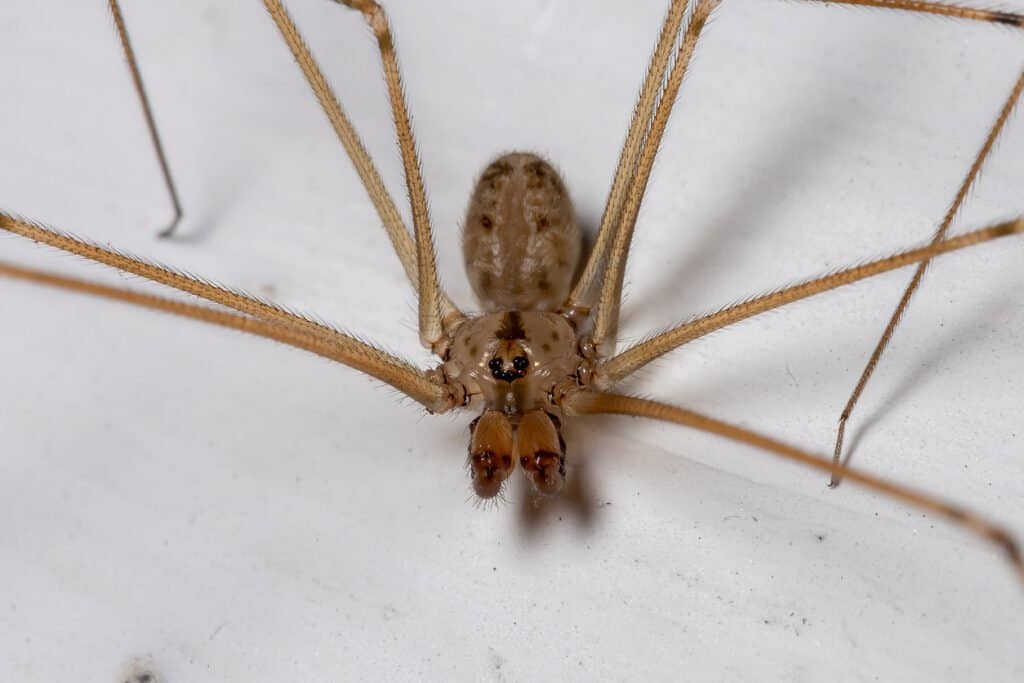
The cellar spider is often called daddy long legs.
©iStock.com/ViniSouza128
| Scientific Name | Size | Danger to Humans |
|---|---|---|
| Pholcus phalangioides | 2-2.4 inches | Not harmful to humans |
As their name suggests, cellar spiders enjoy spending time in cellars and the lower levels of homes and buildings. The members of this genus can vary quite a bit since they are found around the world. However, this particular species is well-known because it has a transparent, grayish-brown body and legs that are much longer than its body.
In fact, most of their length comes from their legs, and they can measure over 2 inches long. Although they are effective hunters of their prey, their bites are not dangerous to humans.
5. Desert Recluse
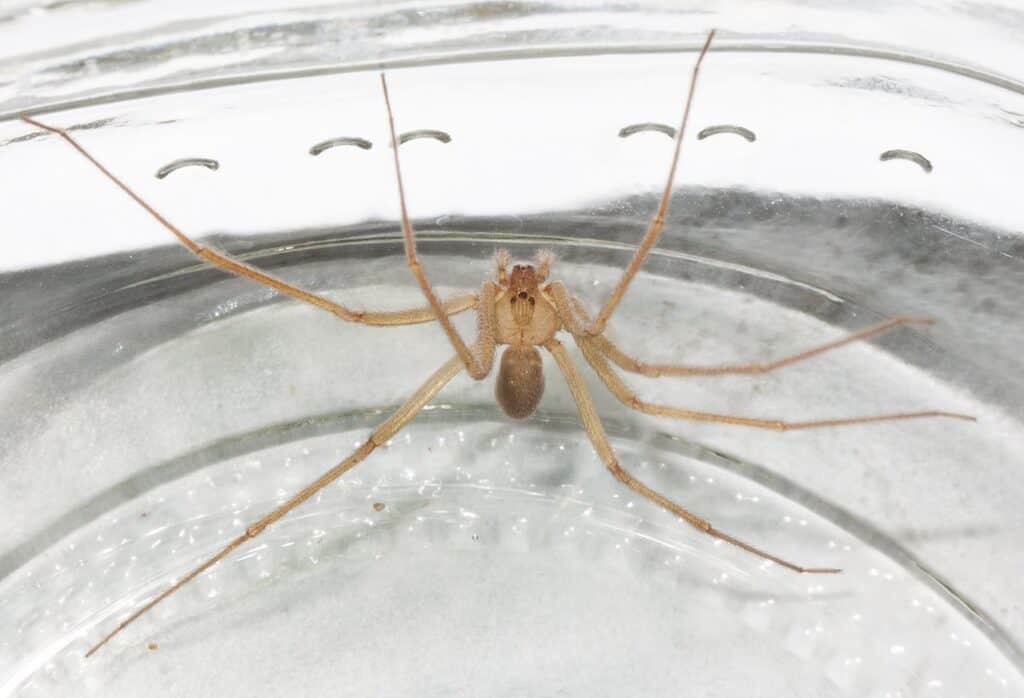
The desert recluse is one of the most dangerous spiders in Nevada.
©DesertTrip / CC BY-SA 4.0, via Wikimedia Commons – Original / License
| Scientific Name | Size | Danger to Humans |
|---|---|---|
| Loxosceles deserta | 1.5-2 inches | Very harmful to humans since their bites can cause fever, nausea, cramps, headache, and lesions that take a while to heal. |
The desert recluse is a spider that you should worry about running into. It has a bite that can be potentially dangerous. This spider is a mostly light tan, but its abdomen is darker, a shade of light brown.
Desert recluses are known for having six eyes rather than eight, but you probably don’t want to get close enough to see them. In short, these are the spiders you should worry about finding in your home, not tarantulas.
However, they prefer to live in the wild areas, so you probably won’t see them too often in Nevada. Unless, of course, you have desert plants around your home. While harmful if introduced via a bite, the venom of these spiders is being used in research.
Now that we’ve covered the 5 biggest spiders in Nevada, you should know what one you’re looking at the next time you spot an arachnid while hiking. Remember, if you can’t positively identify the spider, it’s best to leave it alone.
Summary of the 5 Biggest Spiders in Nevada
Here’s a recap of the five largest spiders in Nevada that we looked at.
| Rank | Spider | Size | Danger to Humans |
|---|---|---|---|
| 1 | Desert Tarantula | 3-5.1 inches | Poses little danger to humans, about as harmful as a bee sting |
| 2 | Wolf Spider | 2-5 inches | Delivers a painful bite that causes swelling, but allergic reactions are possible |
| 3 | Giant Crab Spider | 3-4 inches | Delivers a painful bite but doesn’t last long |
| 4 | Cellar Spider | 2-2.4 inches | Not harmful to humans |
| 5 | Desert Recluse | 1.5-2 inches | Very harmful to humans |
Thank you for reading! Have some feedback for us? Contact the AZ Animals editorial team.







